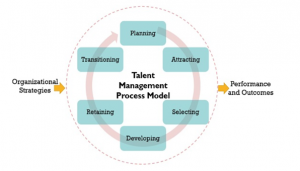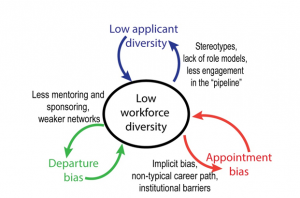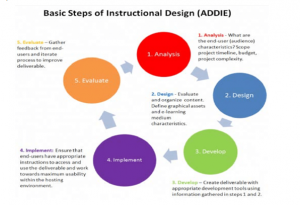“ANALYSE THE EXISTING HUMAN BEHAVIOUR IN A REAL ORGANISATION, AND PROVIDE THE CHANGE PLAN ON HOW TO OPTIMISE THE PERFORMANCE”
Abstract
Along with a brief introduction on the topic, the organisational background of Vodafone Group Plc has been provided in the report. The report has been focusing on the existing human behaviour in the multinational companies and the change plan for optimising the employee performance. The models like “Talent Management Model”, “Low Workforce Diversity: A model for change”, “Performance Management Model” and ADDIE model can help in bringing many advantages within Vodafone Plc. These models can help in enhancing overall organisational operations and acquire benefits for both employees and employers. However, there are certain negative aspects that can have a bad impact on multinational corporations. Recommendations have been provided for Vodafone Group Plc along with a brief conclusion.
HR is an important division found in not only transnational organisations but in comparatively smaller organisations as well. Management involves getting things done by people who belong to the workforce of any companies. HR is responsible for making effective utilisation of workers, reduction of risks as well as maximising “return on investment” (ROI). The HR department is responsible for managing the talent of the workforces, implementing diversity management, management of performance as well as reinforcing rules and regulations. This report is going to focus on understanding subsisting human behaviour within the chosen organisation and how the incorporation of a change plan can help in optimising the performance of the workforce.
Vodafone Group Plc is one of the biggest multinational companies in the telecommunication sector. It is the fifth largest telecommunication company in the world. The company is headquartered in Berkshire, United Kingdom which was established by Gerry Whent and Ernest Harrison in 1982. Vodafone group Plc mainly operates in Asia, Europe, Africa and Oceania. The annual revenue of this company is around 43.67 Billion Euros (Statista.com, 2020). The workforce that his multinational company has is approximately 98,996 till 2019. There are a total number of 979.09 million wireless subscribers of Vodafone Group Plc globally.
2. Definition of the topic and key concepts
Human behaviour plays a key role in attaining satisfaction in the workplace and helps the employer organisation to achieve excellence. Lack of job satisfaction contributes to inferior employee performance (Din et al. 2019). Business organization specifically multinational companies face several issues regarding their HRM practices which contribute to employee dissatisfaction and lowered quality employee performance. These issues can be identified with the help of application of several HRM models and theoretical frameworks. However, the most common issues arising within an organisation are talent management issues, diversity management issues, health and safety related issues. However, expatriate management issues are also common in multinational companies.
Some of the major HRM issues include talent management and diversity management. Talent management issues are contributed because of inaccurate resourcing and its adverse impact on the organisational culture. In order to improve the human behaviour of the organisation MNC companies have to introduce a change plan which focuses on rectifying these issues. MNCs which have a large demand for recruiting new talents in a reduced amount of time contribute to the selection of unsuitable candidates for the organisations. Unable to take help of the available technological advancements can contribute to the poor recruiting system. In case, enough resources are not assigned for the recruitment process then the recruitment process becomes lacking. As stated by Björkman et al. (2017), recruiting unsuitable employees deteriorates the organisational culture as they tend to not fit in the organisation and its flow of work. Unsuitable recruited candidates face difficulty to follow the values and beliefs which are followed by the workforce of Multinational companies. The shared values and beliefs influence the workforce to work towards achieving organisational goals while delivering effective work performance. This also deteriorates the building process of a diverse workforce. According to the international human resources planning, a diverse workforce can help MNCs to deliver more culture appropriate services. Diverse workforce also creates the requirements of trading all the employees equally for a better establishment of HRM practices within an organisation. Multinational companies which do not utilize the diverse range of skills the diverse workforce possesses encounter deteriorated performance of the employees. Trying to deliver work according to the requirements of the global market creates increased pressure on the diverse workforce which have been impacting their performance and deteriorating the work culture.
The company also lacks in the health and safety of the employees. Safety measures have to be taken for the employees who work on site as it includes safety hazards. In the view of Amponsah-Tawiah and Mensah (2016), providing knowledge about health and safety to the employees helps in developing effective human resource management. MNCs that do not have training programmes for their employees to provide them knowledge about their health and safety have inferior HRM. Lack of training programmes prevents the development process of the employees. Training and development initiatives taken by the employer organisation helps in improving employee performance and the work culture of the company.
3. Application of theories and models for analysing raising issues of the organisation
Talent management is the commitment of a business organisation’s Human Resource department to recruit, retain and develop eligible and talented candidates for the job roles of the organisation. Application of Talent management model can help to identify the HRM issues arising within an organisation. Vodafone Group Plc is a multinational telecommunication company that has been facing several issues regarding their HRM practices. As stated by Shanbhag et al. (2016), Talent Management Model states that talent management depends on its five elements such as, planning, attracting, developing, retaining and transitioning.

Figure 1: Talent Management Process Model
Source: Businessjargons.com (2020)
Planning
Vodafone usually develops their organizational strategies to recruit new candidates in the organisational structure for attaining their business goals. This process is executed to target the most talented and best suited candidates for the organisation. However, Vodafone required more thorough planning to effectively execute talent management practices within the organisation
Attracting and selecting
Lack of resources allocated for the talent management practices have deteriorated the talent management practice of Vodafone Group Plc in various countries. Utilizing appropriate technological advancements can help Vodafone to attract talented and knowledgeable candidates to their organisation and select best suited candidates among them (Mihalcea et al. 2017). The candidates that have the potential to fulfil the business objects can be selected for the organisation.
Developing
Employees who are provided accurate induction from the employer organisation are more likely to stay for a long time and work dedicatedly. However, Vodafone Group Plc lacks its ability to welcome new recruitments and provide them adequate induction training that can help the employees to understand their responsibilities and duties. Employees are required to be provided with training initiatives which help employees to develop their talent and skills usually enable their long stay in the organisation.
Retaining
Employees are not valued at Vodafone Group Plc which contributes to the increasing number of people leaving the organisation after working for a limited time period. Employee talents have to be aligned with the requirements of the job role of the employer organisation (De Boeck et al. 2018). This initiative can help in promoting talent management. Vodafone fails to fulfil these criteria and contributes to the arising issue of talent management.
Transitioning
Retirement or promotion for the employees at senior positions creates the requirements of the new talents for acquiring that superior position. However, in Vodafone senior employees are not provided with promotions more often which deteriorates the process of career growth of the employees. Transitioning of the employees are required to maintain a skilled and talented workforce within an organisation. Retirement plans also encourage employees to take retirement after a certain period of serving the organisation. Vodafone does not have any particular retirement plan which deteriorated the transiting process.
3.2 Low Workforce Diversity: A Model for Change
Workforce diversity is the difference in the age, sex, social and cultural background, physical abilities and disabilities and many other aspects of the employees working in business organisations. Multinational organisations are required to take several initiatives to maintain their workforce diversity. Inclusion approaches that help to promote workforce diversity such as applicant diversity, appointment bias and departure bias cannot prevent biases.

Figure 2: Low Workforce Diversity Model
Source: Ncbi.nlm.nih.gov (2020)
Low applicant diversity
Criteria for the recruitment process have to be set as per the knowledge, skill and talent of the candidate. The recruitment process that includes cultural or social background details of the candidates contribute to the low applicant diversity. In the viewpoints of Őnday (2016), stereotyping the applicants reduces their engagement with the organisation. Vodafone has low workforce diversity as their applicant diversity is also low. Existing employees at the organisation have a lack of role models who can represent workforce diversity. Lack of role models in the organisational structure contributes to the low applicant diversity.
Appointment Bias
Lack of female candidates in the workforce of Vodafone has made the appointment process bias. According to Lee and Kim (2020), females are not provided opportunity for onsite job roles as it includes risk of safety for the females and the recruiters tend to assume that females are good for in office job roles rather than on-site roles.
Departure Bias
Inclusion is not the end of workplace bias which affects the productivity of the workforce as well. People from various socio-cultural backgrounds tend to quit their job after a certain time of working in Vodafone Group Plc. due to workplace bias.
Business organisations usually ADDIE model to develop the accurate and needed training programme for the employees that can help in promoting employee development. There are five phases that can help in providing effective knowledge about certain topics (Budoya et al. 2019).

Figure 3: ADDIE Model for employee training and development
Source: Researchgate.net (2020)
Vodafone Group Plc does not necessarily arrange training and development programmes for the employees regarding health and safety. This creates a gap in the knowledge of the employees regarding the safety measures they are required to take while working within the organisation. Based on the views of Xing and Gu (2019), it can be stated that on-site employees have to follow certain safety measures that can help to maintain their wellbeing and safety. Employees are required to be provided with training sessions that can help them to attain effective knowledge for performing well in the workplace while taking care of their own safety. Basic steps, of the ADDIE model help to develop training sessions. In order to do that analysis is the first step that has to be executed. Then design of the training programmes have to be developed and then executed. At last implementation of the programmes are done. Evaluation has to be done after the implementation to identify the efficiency of the training programmes (Armstrong and Landers, 2018). This can help the organisations to identify whether the training programmes have been helpful for the employees and have promoted their development or not. Vodafone has no proper development of their training programmes for employee development. This is the reason behind the arising issue of health and safety within the organisation which requires training on the subject to raise awareness among the employees.
3.4 Performance Management Model
This model helps to identify the proper HRM practice that manages the performance of the employees. According to Bartz et al. (2017), managerial employees usually undertake four steps to manage the performance of the employees such as, Plan, Coach, Evaluate and Reward.

Figure 3: Performance Management Model
Source: Employees.tamu.edu (2020)
However, managerial employees working at Vodafone Group Plc usually do not take required initiatives for managing the performance of the employees which results in issues in expatriate management. The multinational organisation recruits candidates from different places. These diverse employees have diverse range of skills and talents (Kawai and Chung, 2019). The company Vodafone does not strategize performance management initiatives to utilize the special capabilities and skills of the local citizens for attaining improvement for the organisation. Local employees effectively understand the requirements of the subscribers and can provide effective customer services. Proper planning, coaching, evaluation and reward systems can help Voafone to mitigate such issues.
4. Discuss Advantages & Criticisms
4.1 Talent Management Model
Some of the key elements of talent management are strategically planning of employee that can help in establishing and developing the company’s goal and acquisition of talent as well as retaining the existing workforce. In Vodafone Plc., talent management includes managing performance, compensation, development of the career and motivated workforce. Influenced by the views of Darouian et al. (2019), the advantages of implementing a “Talent management model” are numerous and it can help above stated organisation in numerous ways. It helps in enhancing the hiring techniques that aid in obtaining better employees for the organisation that has a positive impact on overall operations. On the other hand, it can be an expensive process that cannot always be afforded by small companies. However, Vodafone Plc. is a multinational organisation operating in a large number of nations that can easily afford to enact a talent management division for acquiring more benefits for profit gain. “Small and medium-sized enterprises” or large corporations with a huge workforce that is suffering from losses cannot afford to incorporate this strategy. “Talent management model” clearly showcases that it can aid in easily developing employees as it is a well-established factor that in the current market, it is crucial to have a well-rounded workforce. In a constantly changing environment because of globalisation, the demand for skilled workers is high, but it is not possible to hire only talented workers for the company which is why it is beneficial to provide learning programs to hone their skills. However, there is an issue with commuting which was previously considered to be a minor issue has become a major issue. According to the views of Shanbhag et al. (2016), there is an evident connection between many jobs and commute time as longer commute times can have a substantial negative impact on new hire retention. For instance, workers stay far away from the organisational building, the percentage of quitting increases significantly in comparison to people with a shorter commute distance. Talent management helps by accessing to authentic data that leads to making smarter business decisions. All these factors showcase that talent management can be both beneficial and disadvantageous.
4.2 Low Workforce Diversity: A model for change
The increment of workplace diversity can bring forth a business advantage, although it can be a key reason behind concerns regarding social concerns. According to the views of Hiemstra et al. (2017), supremacy in accordance with ethnicity, gender or any other factors of diversity has still been impervious to change evident in many sectors. It can be challenging for many aspects to having a significant contribution to the management of diversity within the workplace. With the help of the aforementioned model, it can be easily explained how bias while appointing workers as well as departure can confine companies in a state that has considerably lower diversity in comparison to the applicant pool. This applicant pool can be termed as workforce diversity in accordance with the poverty trap. However, it has to be noted that when the rate of turnover is low, it takes a long time for employee diversity to change without any presence of bias. There are certain advantages of managing diversity within the workplace by including “Low Workforce Diversity” based model. Since employees with a diverse cultural background always have a unique experience as well as perceptions that helps in strengthening and increasing productivity. With a wide range of ideas and perceptions, it can be helpful for multinational companies like Vodafone Plc. to operate effectively in different places without facing difficulties like cultural barriers. On the contrary, it has been highlighted by Choi et al. (2017), organisational costs can increase manifolds because of cultural diversity. The bias nature of Vodafone can cause issues for the organisation for being discriminatory while appointing and departure. It is evident that increasing flexibility, creativity as well as problem-solving skills cannot be properly used if the organisational culture is not diversified or if the workers are facing bigotry. However, there is going to be issues’ regarding converging actions as it is going to be challenging to come in agreement regarding any specific actions caused by miscommunication. The model can help in covering various types of circumstances prevailing within the organisation but it has not provided any instances where the rate of prejudice is low.
4.3 ADDIE model
The aforementioned model is basically a process that can be used for instructing and training to the workforce which is why it can be used in case of Vodafone Plc. The company is experiencing some shortcomings regarding and health and safety management which can be addressed by enacting this model. There are various reasons because of which this model is going to be successful and help in managing the safety factors associated in the workplace. Based on the views of Budoya et al. (2019), it is heavily related to good and effective quality design along with clear learning objectives. Both the aforementioned factor clearly indicates that this model can help in establishing good training practices that can be beneficial for employees and ultimately for organisations. Moreover, this model can help Vodafone Plc to construct a structured content in a cautious manner and assist in controlling workloads. In the current competitive business world, it is essential to distribute workloads in an effective manner so that there can be a balance in life and work. This model helps in making sure that all the relevant activities are being included and evaluated them in such a manner that desired learning outcomes have been acquired. On the other hand, there are certain big disadvantages that make it quite difficult to use. Since ADDIE is an “Instructional Design Model” which completely ignores the necessities and factors of any business and Vodafone Plc is a multinational business organisation which can make it hard to implement this model to provide training. Moreover, this model was established for providing a good learning experience which is why it cannot solve any trading issues and problems (Patel et al. 2018). However, for this organisation, it is not going to be too difficult as this model can help in teaching the workers helping in future iterations and acquiring feedback. It can help in improving and revising the contents.
4.4 Performance Management Model
It is essential to make sure that individual goals are to be aligned with corporate’ objectives. The management is responsible for jetting at a higher level and setting organisational goals into individual and comparatively smaller goals. In the second stage, progress is closely monitored as performance is developed with the help of coaching, directing, enacting corrective actions and motivating employees. In the case of Vodafone Plc, the focus is going to be on expatriate management as various issues emerge from this organisational operation. According to the views of Tomaževič et al. (2017), an expatriate is such a worker who is ordered by the employer to work in a non-native country. It is often believed that expatriates have the demand by global competent managers as every firms are facing an increased amount of competition. Expatriate employees are often provided with pre-departure training and assistance in developing a social network in order to work effectively. There are certain advantages of implementing this model like maintaining consistency and provide motivation. While undertaking any task, it is crucial to incorporate consistent approaches for helping the expatriate employees and since they are moving out of their comfort zone and working elsewhere, motivation plays a critical role and ensures the worker is convinced about his job role. This model helps in boosting morale and retains more workers so that they can perform better at organisational tasks and their respective job roles which can be beneficial for organisations like Vodafone Plc. However, management of performance can initiate negative experience and if it is not done appropriately, it can have a negative impact on both workers and managers. Performance management model can help in assessing organisational impact and incorporate tasks that are going to be advantageous for them (Bartz et al. 2017). This actively illustrates that this model helps to increase the annual revenue of organisations. Furthermore, it aids in comprehending the training needs based on which the training sessions are provided to the employees, thus mitigating the risks associated with firing. On the other hand, implementing this model can be time-consuming and it can become overwhelming for managers who are dealing with more numbers of expatriate employees.
5. Change management plan to optimise employee performance
Objective
The change management plan can help Vodafone to improve its HRM practices and provide superior services to the employees working in the organisation. Improved HRM initiatives can help in sustaining talented and skilled employees for a long time (Hee and Shanmugam, 2019). The arising issues can be mitigated with the application of the change management plan in the organisational structure.
Initiation
Before initiating the development process of the change plan the reason for change has to be identified. After applying the theories and framework the arising issues within the organisational structure of Vodafone have been identified. Talent management system of the company has been lacking and has several issues such as low workplace diversity. The planning has to be done depending upon the issues that have been identified.
Planning
Planning for the change management plan has to be done as per the requirements of the organisation. In order to mitigate the issue regarding talent management, a new and improved recruitment process has to be undertaken by Vodafone which can provide employment opportunities irrespective of age, race, gender and socio-cultural background. The new recruitment plan has to promote diversity within the organisation. The funding required for the change management plan is as follows,
| Initiatives | Cost |
| ● Technological development for recruitment process | $1000 |
| ● Recruiting trainers for providing training | $2500 |
| Total | $3500 |
Table 1: Budget of the change plan
(Source: created by author)
Execution
Providing employment opportunities and promoting the talent and skill of the local employees can help in performance and expatriate management of the workforce at Vodafone. In order to execute the initiatives of the change management plan Vodafone have to assign new recruiters and utilize technology to recruit candidates. Usage of technology for the recruitment process can help to attract candidates from various backgrounds and help to eliminate biases from the recruitment process.
New training initiatives have to be taken for providing effective knowledge regarding workplace health and safety. Training sessions for promoting special abilities of the local employees to communicate with the consumers can be arranged for improved expatriate management of the multinational company Vodafone Group Plc. As stated by Singh and Jayachandran (2018), providing induction training and further training to the employees for promoting their development can help the multinational company eliminate its HRM related issues.
Implementation
Implementation process of the change management plan can be initiated with preparing the employees for the change in the organizational structure. Explaining the requirement of the changes can help the employees to accept the changes easily which can further help in the implementation process. Trainers have to be recruited for providing training to the employees which require a certain amount of funds. The implementation process will require funding.
6. Recommendation and conclusion
6.1 Recommendations
Recommendation 1
Technological aid can be taken for the recruitment process of Vodafone. Job opportunities can be posted on several job searching portals that can help in attracting best suited, skilled and educated professionals while eliminating any scope of discrimination.
Recommendation 2
Training sessions are recommended to be arranged for the employee’s working at Vodafone. Induction training sessions can help the employees to understand their roles and responsibilities. Training sessions about employee health and safety helps the employees to understand the safety measures they have to take while working within the organisation.
Recommendation 3
Evaluation of the recruitment process is recommended to be done for Vodafone Group Plc. Feedbacks from the employees can be taken about their experience of the recruitment process for identifying the accuracy of the recruitment process for talent management and promoting diversity management.
6.2 Conclusion
It can be concluded that existing human behaviour of the employees of Vodafone Group Plc can be improved with improved HRM practices within the organisation. The arising issues can be mitigated with the help of change plan. Issues regarding talent management, diversity management, health and safety management and expatriate management issues can be eliminated with the help of the recommendations provided to the organisation Vodafone. Theories and models have been applied for the identification of the issues and help Vodafone to improve their employee performance. Developing new recruitment policies while inducing technological advancements and new training programmes can help the multinational company to attain success with increased employee performance and productivity.
Reference list
Amponsah-Tawiah, K. and Mensah, J., (2016). Occupational health and safety and organizational commitment: evidence from the Ghanaian mining industry. Safety and health at work, 7(3), pp.225-230.
Armstrong, M.B. and Landers, R.N., (2018). Gamification of employee training and development. International Journal of Training and Development, 22(2), pp.162-169.
Bartz, D., Thompson, K. and Rice, P., (2017). Maximizing the human capital of millennials through supervisors using performance management. International Journal of Management, Business, and Administration, 20(1), pp.1-9.
Bartz, D., Thompson, K. and Rice, P., (2017). Maximizing the human capital of millennials through supervisors using performance management. International Journal of Management, Business, and Administration, 20(1), pp.1-9.
Björkman, I., Ehrnrooth, M., Mäkelä, K., Smale, A. and Sumelius, J., (2017). Talent management in multinational corporations. The Oxford handbook of talent management, p.461.
Budoya, C., Kissaka, M. and Mtebe, J., (2019). Instructional design enabled Agile method using ADDIE model and Feature Driven Development method. International Journal of Education and Development using ICT, 15(1).
Budoya, C., Kissaka, M. and Mtebe, J., (2019). Instructional design enabled Agile method using ADDIE model and Feature Driven Development method. International Journal of Education and Development using ICT, 15(1).
Businessjargons.com (2020) Talent Management Available at: https://businessjargons.com/talent-management.html [Accessed on 11 April 2020]
Choi, J.N., Sung, S.Y. and Zhang, Z., (2017). Workforce diversity in manufacturing companies and organizational performance: the role of status-relatedness and internal processes. The International Journal of Human Resource Management, 28(19), pp.2738-2761.
Darouian, S., Mirsepasi, N. and Daneshfard, K., (2019). Pathology and design of optimal talent management model. Management Research in Iran, 23(3), pp.28-52.
De Boeck, G., Meyers, M.C. and Dries, N., (2018). Employee reactions to talent management: Assumptions versus evidence. Journal of Organizational Behavior, 39(2), pp.199-213.
Din, S.U., Ishfaq, M., Khan, M.I. and Khan, M.A., (2019). A Study of Role Stressors and Job Satisfaction: The Case of MNCs in Collectivist Context. Behavioral Sciences, 9(5), p.49.
Employees.tamu.edu (2020)Performance Management Model (PCER) https://employees.tamu.edu/employment/performancemanagement/resources/performance-management-model-pcer/
Hee, O.C. and Shanmugam, N., (2019). A Review of Human Resource Change Management Strategies in the Digital Era. INTERNATIONAL JOURNAL OF ACADEMIC RESEARCH IN BUSINESS AND SOCIAL SCIENCES, 9(3).
Hiemstra, A.M., Derous, E. and Born, M.P., (2017). Psychological predictors of cultural diversity support at work. Cultural Diversity and Ethnic Minority Psychology, 23(3), p.312.
Kawai, N. and Chung, C., (2019). Expatriate utilization, subsidiary knowledge creation and performance: The moderating role of subsidiary strategic context. Journal of World Business, 54(1), pp.24-36.
Lee, H.W. and Kim, E., (2020). Workforce diversity and firm performance: Relational coordination as a mediator and structural empowerment and multisource feedback as moderators. Human Resource Management, 59(1), pp.5-23.
Mihalcea, A., (2017). Employer branding and talent management in the digital age. Management Dynamics in the Knowledge Economy, 5(2), pp.289-306.
Ncbi.nlm.nih.gov (2020) How to Break the Cycle of Low Workforce Diversity: A Model for Change Available at: https://www.ncbi.nlm.nih.gov/pmc/articles/PMC4517751/figure/pone.0133208.g001/ [Accessed on 12 April 2020]
Őnday, Ő., (2016). Global Workforce Diversity Management and the Challenge of Managing Diversity: Situation on World and in Turkey. Global Journal of Human Resource Management, 4(1), pp.31-51.
Patel, S.R., Margolies, P.J., Covell, N.H., Lipscomb, C. and Dixon, L.B., (2018). Using instructional design, analyze, design, develop, implement, and evaluate, to develop e-learning modules to disseminate supported employment for community behavioral health treatment programs in New York state. Frontiers in public health, 6, p.113.
Researchgate.net (2020) Basic Steps of Instructional Design (ADDIE) Available at: https://www.researchgate.net/figure/The-ADDIE-Model-SEO-Recommendations-nd-Retrieved-from_fig1_325070648 [Accessed on 12 April 2020]
Shanbhag, M., Dutt, M.L. and Bagwe, S., (2016). Strategic talent management: A conceptual analysis of BCG model. Imperial Journal of Interdisciplinary Research, 2(7), pp.552-556.
Shanbhag, M., Dutt, M.L. and Bagwe, S., (2016). Strategic talent management: A conceptual analysis of BCG model. Imperial Journal of Interdisciplinary Research, 2(7), pp.552-556.
Singh, M.P. and Jayachandran, K.S., (2018). Training Needs Analysis for Induction Training of State forest Service Officers. Indian Forester, 144(2), pp.105-116.
Statista.com (2020) Revenue of the Vodafone Group from 2010 to 2019 (in billion British pounds/euros) Available at: https://www.statista.com/statistics/241610/revenue-of-vodafone-since-2008/ [Accessed on 10 April 2020]
Tomaževič, N., Tekavčič, M. and Peljhan, D., (2017). Towards excellence in public administration: organisation theory-based performance management model. Total Quality Management & Business Excellence, 28(5-6), pp.578-599.
Xing, S. and Gu, S., (2019). Case study on the learning model for a multinational pharmaceutical company. Pharmaceutical Project Management, p.3.


